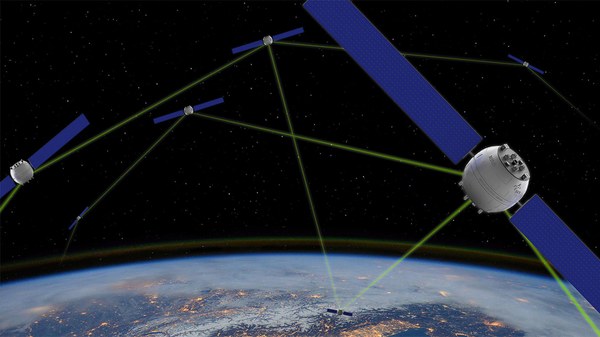Mitigation of Atmospheric Impairments Group
The Mitigation of Atmospheric Impairments group in the Department of Optical Satellite Links develops technologies aimed at countering the adverse effects of atmospheric turbulence in optical communications links.
Adaptive Optics
Adaptive Optics is a key technology used to mitigate the effects of optical aberrations in Free Space Optical Communications, as well as in the fields of astronomy and biology. As light travels to and from a satellite, the atmospheric turbulence causes distortions of the light wave-front that would limit how much light can be received by the satellite and coupled into a single mode fibre at the Optical Ground Station. An Adaptive Optics system corrects the distortions in real-time, sensing them using a “Wave-Front Sensor” and correcting them with a Deformable Mirror. A “Real-Time Control” computer computes the next mirror commands based on the last wave-front sensor measurements.
At the group, we are interested in developing:
- New wave-front sensing techniques that can cope with the strong turbulence conditions found in free space optical communications scenarios,
- Pre-distortion adaptive optics techniques to improve the stability of the uplink beam to the satellite, as well as the downlink beam,
- Advanced control algorithms that can more efficiently compute the optimal way to update the deformable mirror,
- And other improvements to existing adaptive optics systems.
Characterisation of Atmospheric Turbulence
To understand the challenges for mitigating the atmospheric turbulence, it must first be understood and quantified. To do this, the group has developed new instruments to characterise the strength, composition and variability of the turbulence above existing and proposed sites for Optical Ground Stations. These include:
- ALCOR – an instrument to understand the impact of the “Point Ahead Angle” on predistortion adaptive optics
- SAFARI – an instrument to provide a vertical turbuolence profile of the atmosphere using only the light received from a satellite.
New turbulence mitigation technologies
The group is also very interesting new other new technologies that can be used to compensate for atmospheric turbulence in free space optical communications. These include photonic devices to improve the light stability in a fibre, or machine learning techniques to perform adaptive optics without a wave-front sensor.
Links and more information


